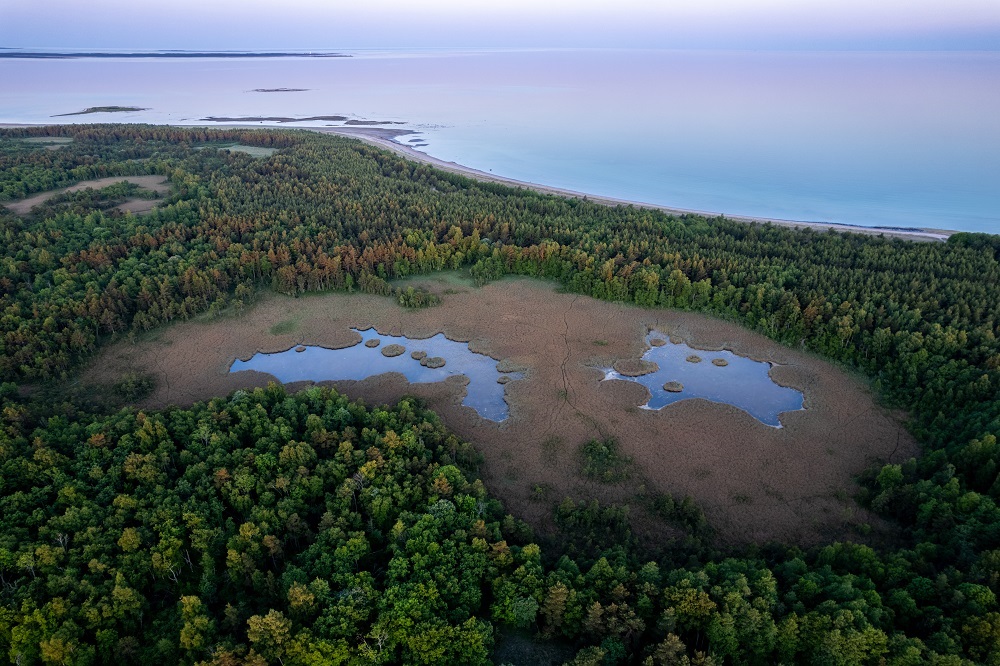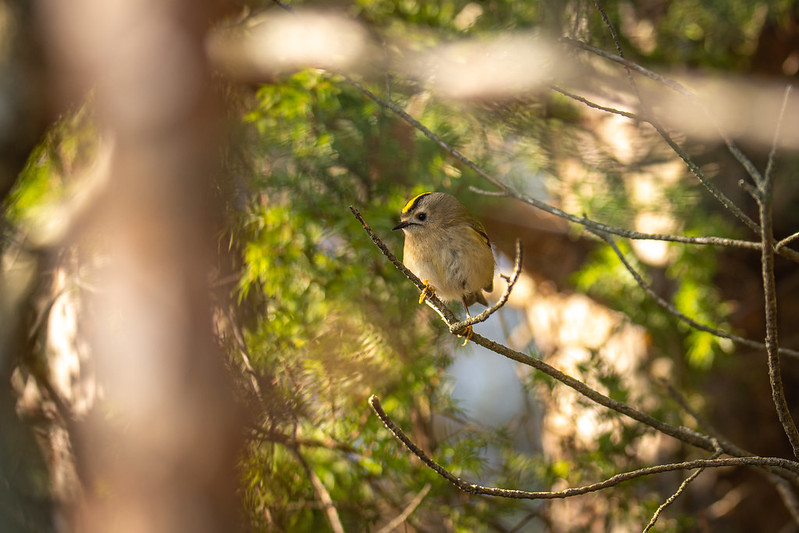Due to its location, Estonia is on the border of the range of many species, which is why we have more species compared to the northern, western, and eastern areas
According to data from the eElurikkus portal, more than 30,000 species are known in Estonia, but it is estimated that there are more than 40,000 species. The constantly updated information about them is gathered in the single database PlutoF (the web output is the portal eElurikkus); according to the portal, as at 22 February 2024, there are 34,257 species known in Estonia.

Due to its location, Estonia is on the border of the range of many species (mostly on the northern or western border), which is why we have more species compared to the northern, western, and eastern areas. While the fauna of Estonia is rather species-poor on a global scale, the flora is much richer in species than in areas of the same size located at the same latitude. The fact that we have fewer species of animals is caused by the relatively cool climate, the relatively late development of the fauna, and the small size of Estonia [1]. However, Estonia’s great richness of plant species is due to our location in the border area of the Eastern and Central European plant geographical regions, as well as calcareous soil, diverse climate (both marine and inland continental), and the historical abundance of semi-natural communities.
Most plant species are found in the mainland and islands of Western Estonia, while the number of species decreases significantly when moving towards the east. The number of species does not change significantly in the north-south direction [2].
Number of species by species group
[3], [4], [5], [6], [7], [8], [9], [10], [11], [12], [13], [14], [15], [16], [17]
| Species group | Estonia | World |
|---|---|---|
| Birds | 400 | 18 000 |
| Mammals | 65 | 5400 |
| Fish | 75 | 30 000 |
| Reptiles | 5 | 8700 |
| Amphibians | 11 | 6300 |
| Lepidoptera | 2400 | 160 000 |
| Mosses | 583 | 12 000 |
| Lichen | 952 | 20 000 |
| Algae | 2500 | 72 500 |
| Fungi | 5500 | 57 000 |
| Vascular plants | 1450 | 308 000 |
* The numbers of many species vary – the highest estimates are given here, but different sources reflect very different numbers
The largest and smallest in Estonia

The largest mammal in Estonia is the elk, which can weigh up to 600 kg [18]. The smallest animal is the Eurasian least shrew, which weighs 1.5 to 4 grams [19].
The largest Estonian bird is the mute swan, which can weigh up to 12 kg [20]. The largest bird of prey is the white-tailed eagle, which weighs more than 5 kg [21]. However, the smallest bird in Estonia is the goldcrest, weighing only 5–6.5 grams [22].
When it comes to the largest invertebrates in Estonia, they are the privet hawk moth (among butterflies), whose wingspan can be up to 12 cm [23], green hawker (among dragonflies, wingspan up to 8.5 cm) [24], and the European rhinoceros beetle (among insects) with a length of up to 8 cm [25]. One of the smallest insects in Estonia may be the 0.2 mm Encarsia formosa, used to control greenhouse pests [26].
The largest plants in Estonia are trees. The oldest and thickest tree is the Tamme-Lauri oak, which is 680 years old and has a circumference of 8.25 metres [27]. The tallest tree grows in Veriora rural municipality in Põlva County and it is a 48.6-metre spruce [28]. One of the smallest flowering plants in Estonia is the common duckweed, whose shoot is 4 mm long and 3 mm wide [29].
Last modified: 16.11.2021
[1] https://et.wikipedia.org/wiki/Eesti_loomastik
[2] http://entsyklopeedia.ee/artikkel/eesti_k%C3%B5rgemad_taimed
[3] https://www.eoy.ee/ET/23/eesti-lindude-nimekiri/
[4] New Study Doubles the Estimate of Bird Species in the World
[5] http://bio.edu.ee/loomad/Imetajad/imetajalist2.htm
[6] http://deve.loodus.ee/ET/avaleht/liigiryhmade-yldinfo/
[7] Lisanduvad alamliigid, mida mõnes nimekirjas arvestatakse liikidena:
http://bio.edu.ee/loomad/Kalad/kalalist2.htm, http://eestikalad.kalateave.ee/list.php?gid=102&top=0
[8] http://bio.edu.ee/loomad/2paiksed/2plist11.htm
[9] https://et.wikipedia.org/wiki/Eesti_samblad
[10] https://en.wikipedia.org/wiki/Moss
[11] http://esamba.bo.bg.ut.ee/checklist/est/home.php
[12] https://en.wikipedia.org/wiki/Lichen
[13] http://bio.edu.ee/taimed/general/indextaim.html
[14] https://en.wikipedia.org/wiki/Algae
[15] http://deve.loodus.ee/ET/avaleht/liigiryhmade-yldinfo/
[16] http://bio.edu.ee/taimed/general/indextaim.html
[17] https://www.biotaxa.org/Phytotaxa/article/view/phytotaxa.261.3.1
[18] http://vana.loodusajakiri.ee/eesti_loodus/EL/vanaweb/0111/piret.html
[19] https://et.wikipedia.org/wiki/K%C3%A4%C3%A4bus-karihiir
[20] http://eestiloodus.horisont.ee/artikkel1827_1806.html
[21] https://www.kotkas.ee/liigid/merikotkas
[22] https://et.wikipedia.org/wiki/P%C3%B6ialpoiss_(lind)
[23] https://www.looduskalender.ee/n/node/412
[24] https://et.wikipedia.org/wiki/Rohe-tondihobu
[25] https://et.wikipedia.org/wiki/Ninasarvikp%C3%B5rnikas
[26] http://vana.loodusajakiri.ee/eesti_loodus/EL/vanaweb/9905/putukarekordid.html
[27] http://vana.loodusajakiri.ee/loodus/artikkel880_876.html
[28] Eesti uued rekordpuud, kõrgeim kuusk ja mänd hoiavad ühte (03.12.2015)
[29] http://herba.folklore.ee/?menu=taime&botid=471